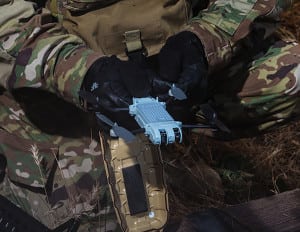
Aerovironment [AVAV] has unveiled a bird-sized miniature unmanned aerial system (UAS) whose small size allows launching from the palm of a hand and makes it difficult to detect while spying on enemy positions for dismounted troops.The ruggedized UAS, called Snipe Nano Quad, began delivering to the first U.S. government customer in April. The Snipe is based on the robotic Nano Hummingbird developed by AeroVironment for the Defense Advanced Research Projects Agency.Snipe will be available to order Fall 2017. Operator training requires…

 By
By 











